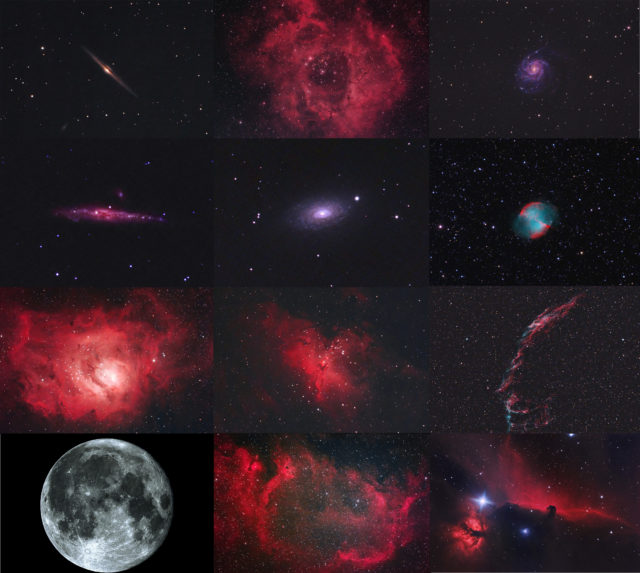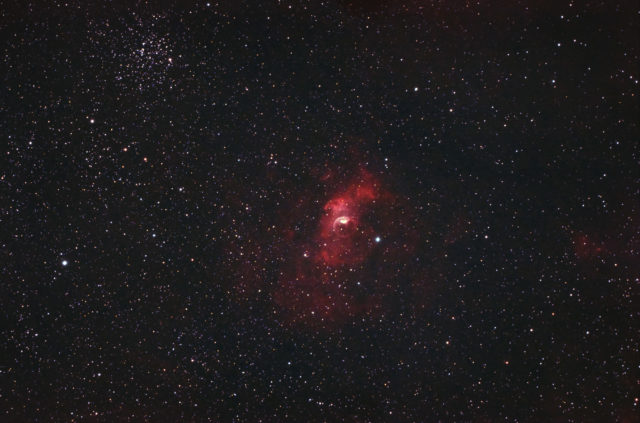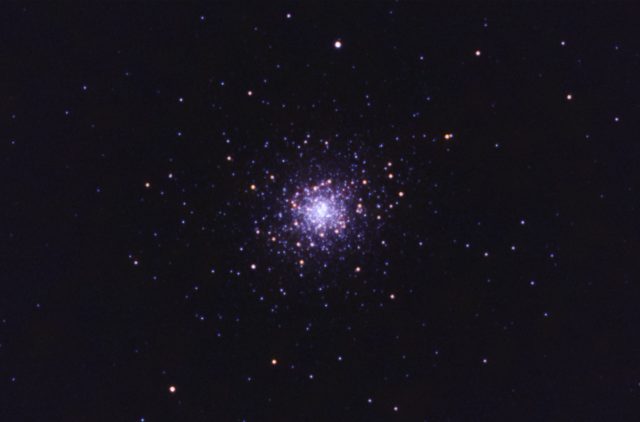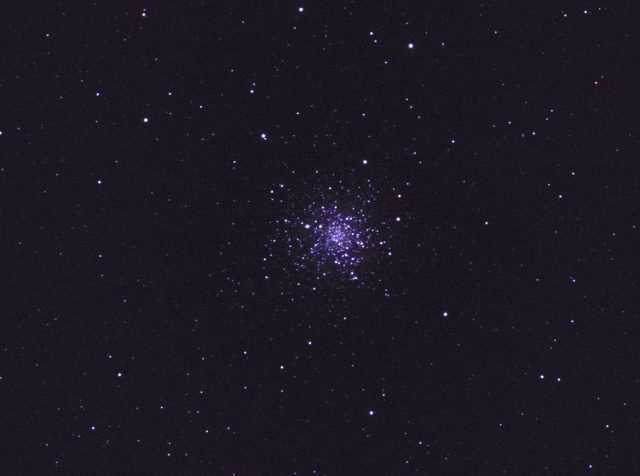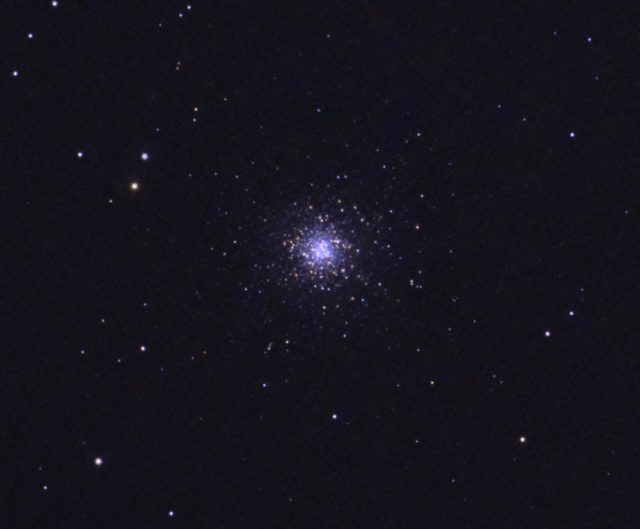The 12 best images of 2020 roughly in a monthly order, Jan to Dec.
Category Archives: Star Clusters
Christmas Tree Cluster and The Cone Nebula
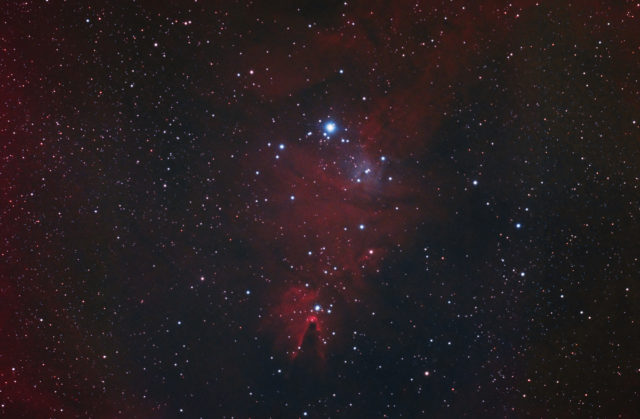
The Bubble Nebula and M52 Open Cluster During a Full Moon
Imaging Session June 20th, 2020
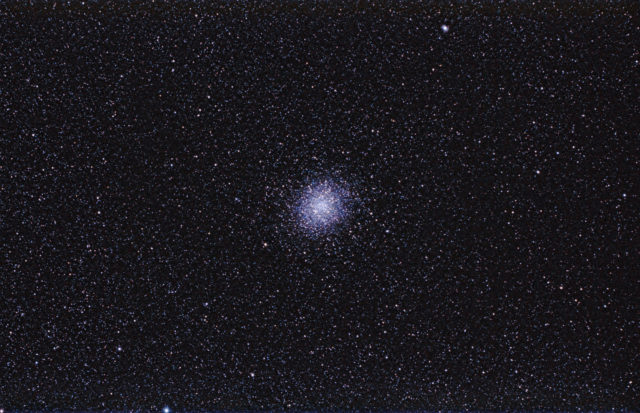
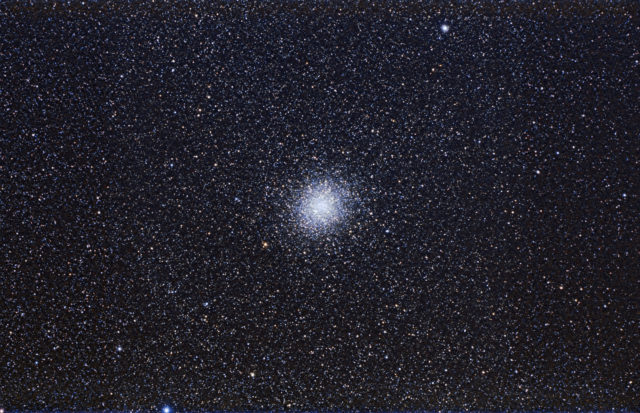
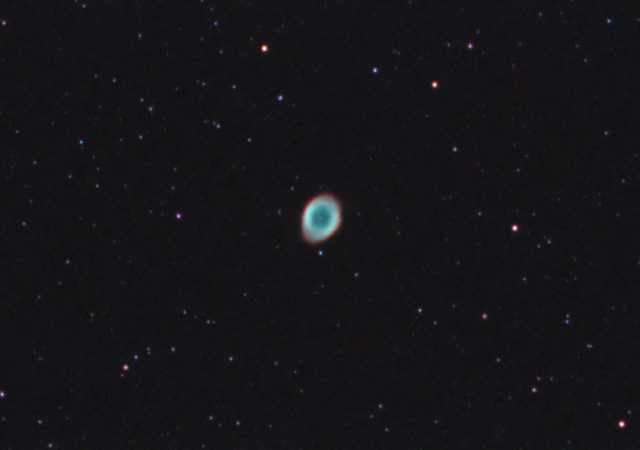
Friday night, Jun 19th, 2020 was warm and muggy and clouds persisted till after 9:00 PM. It was predicted to clear, so I went to bed early and woke up just before 2:00 AM and setup my scope then. It was clear, but the transparency was poor and the humidity was still high.
I managed to get a decent amount of data on two objects, and I also peeked at 2 or 3 other things in between. M22, the globular cluster in the first image, was a secondary target and I really wanted to get the Omega Nebula and the Trifid Nebula nearby. My narrow window to image them was so small, however. Trees and streetlights were in the way. By the time I was ready to shoot, that area had moved out of position.
I had imaged M22 a few times, but with other scopes. I took all the data I had on it and recombined it to produce the 2nd image above. It is data from an 8″ Schmidt-Newt and a 6″ Schmidt-Newt, along with the data from the first image above.
The Ring Nebula was a quick peek that turned into a usable image. The full size image is a crop at 100% resolution of the central area. I was hoping to pick up that galaxy that is nearby to the Ring, but 48×15 sec sub-images wasn’t enough to bring it out.
However, I did have a stack of 34×30 sec sub-images taken in March that I blended this night’s data with and now you can see it, just barely, above and slightly left of the ring. Check it out:
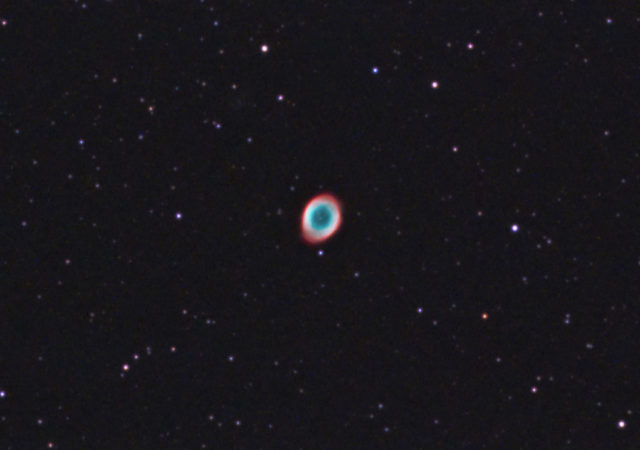
It looks like I need to get out of the big city to get the summertime nebulae targets like Omega and the Trifid. Late June and early July sometimes has clear skies and hopefully I’ll be lucky and get to a dark sky site before too long.
Supernova in M61! Another M13 Globular Shot, Too.
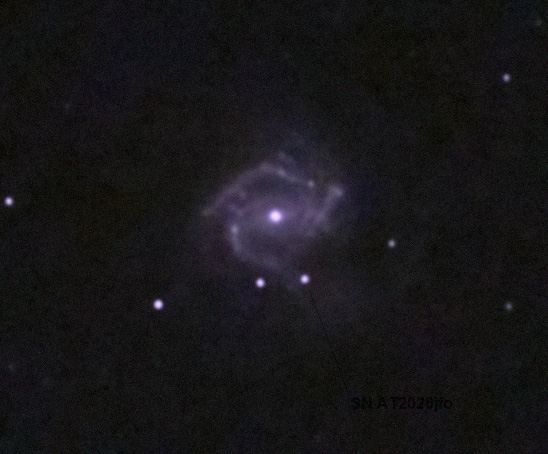
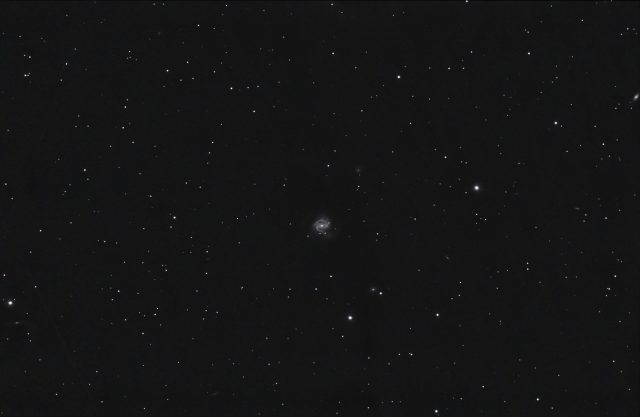
I imaged the galaxy above and the globular below on Sunday, May 10, 2020. Very nice weather that day and a pretty good evening, too. Being I had to work the next day, I cut the session short and only got data on two objects.
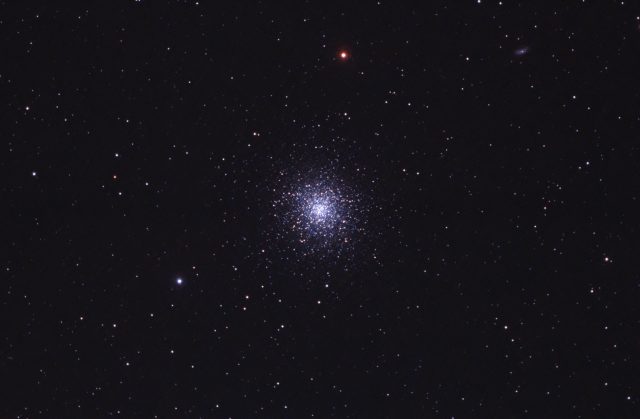
Imaging Session April 30, 2020
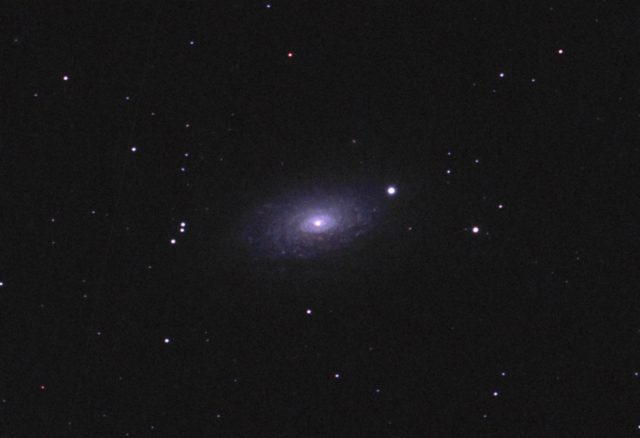
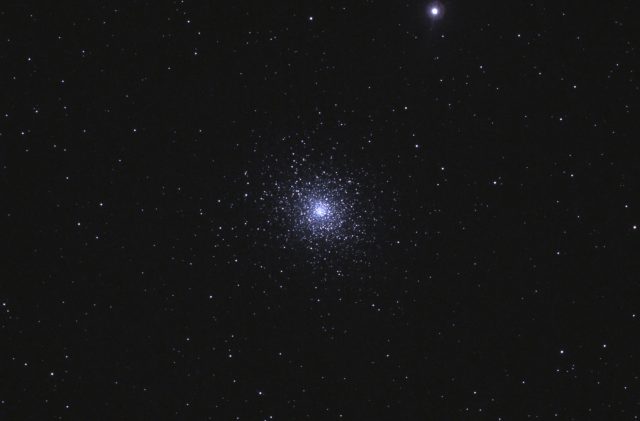
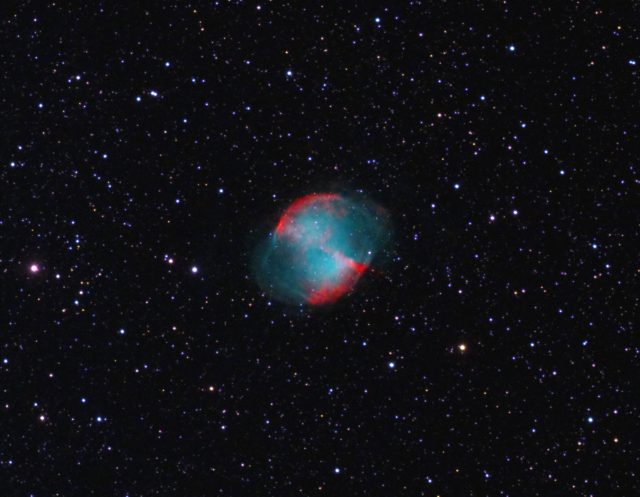
The Sunflower Galaxy was the second time this year for imaging it, so I combined the two data sets and got this detail view below. It is 3.77 hrs total time:
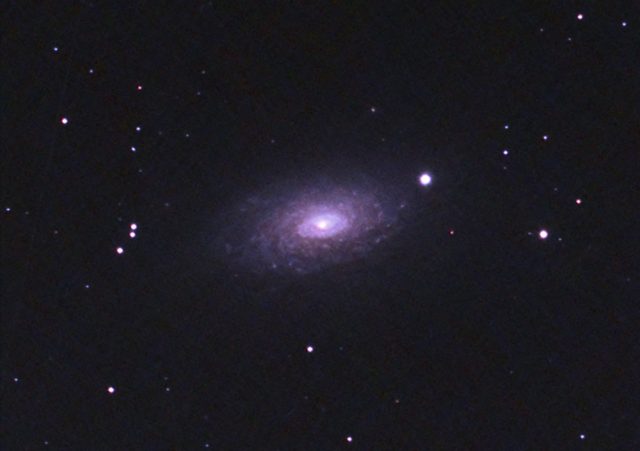
Imaging Session April 29, 2020
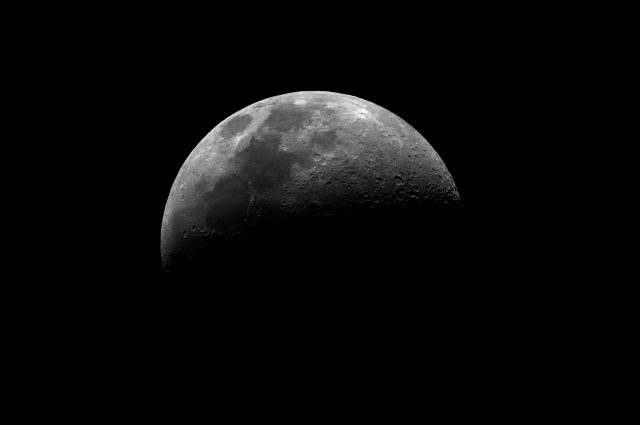
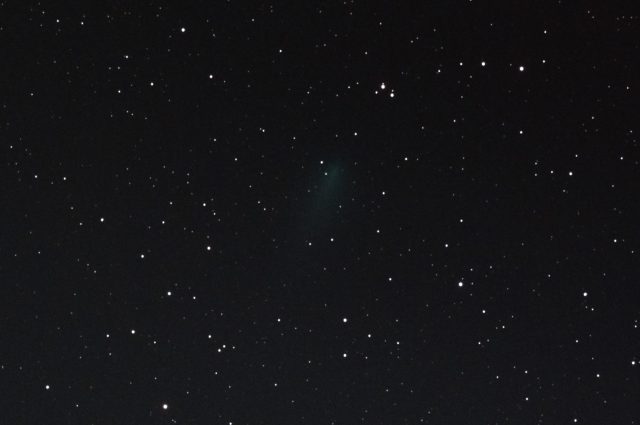
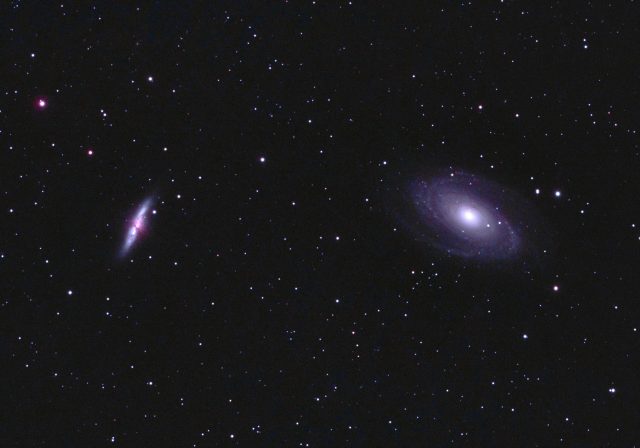

These are all the objects I managed to image on the night of Wednesday, April 29, 2020 and on into Thursday morning. SharpCap 3.2 LiveStacking with dark and flat calibration plus dithering was used for acquisition. Only minimal processing for all of these captures in Fitsworks and PS CS3.
I was trying not to waste a very clear evening after a storm had moved through earlier that day. Not too bad, I guess.

